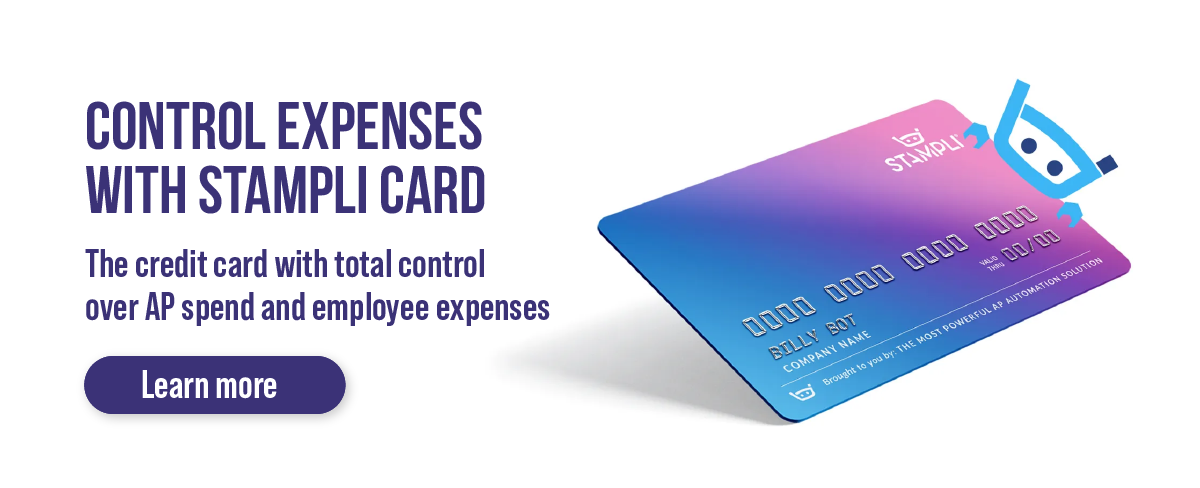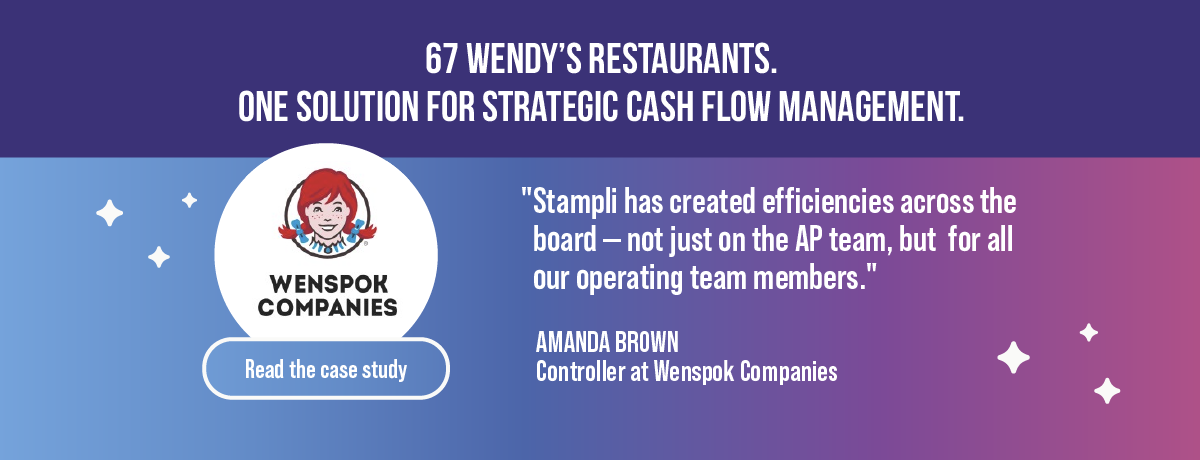Track small business expenses in 6 easy steps

It’s important to know how much money your business spends and where it is going.
Growth presents a challenge to small business owners. A small business owner could survive in the early stages by manually tracking and entering expenses. However, as your business grows, so does the number of expenses – and the job of tracking them.
Business expenses refer to the costs incurred when running your business. These expenses, or business deductions, are subtracted from your revenue to calculate your profits, losses, and taxable income. They include:
- Advertising and marketing costs
- Bank fees and commissions
- Software
- Office supplies, utilities, and rent
- Insurance
- Payroll and employee benefits
- Printing, postage, and delivery
- Travel, entertainment, and mileage
Properly tracking your business expenses is essential for financial management and tax purposes. In this article, we’ll show you 6 steps to transition from manual expense tracking processes to a spend management strategy. You’ll learn how to use accounts payable automation and spend management solutions that save you time and money and help you make the right decisions to grow your business.
Benefits of tracking business expenses
Tracking your expenses saves your business time and money. When you know what your business spends, you can plan and budget for future costs and avoid tax penalties and late payment fees. You can also manage your cash flow and not get caught empty-handed when it’s time to pay your expenses.
There are some other significant benefits to effectively tracking and recording expenses:
Improved bookkeeping
Keeping accurate financial records and statements makes it easier to anticipate and meet your financial obligations and tax reporting and filing requirements. You can also assess where to reduce business expenses to manage your cash flow better.
Tax savings
The IRS lets you deduct many business expenses and reduce your tax liability. When you keep accurate records of your expenses, you have evidence to back up your tax deductions when filing your tax return.
Detect and prevent fraud
You can closely monitor your spending for signs of fraudulent activity like duplicate or fake expenses and stop them when they occur, not months later.
Create and maintain a budget
To maintain a budget, you need to know what your business spends across departments. When you properly track your expenses, you can create an accurate budget forecast and track actual expenses against your budget.
The bottom line: Tracking expenses brings many valuable benefits to businesses of all sizes. Follow the six steps in this guide to develop the tools and processes you’ll need to get started.
Step 1: Get a business bank account and payment or credit cards to manage spending
The first step to keeping track of your business expenses is to create a separate business financial account. You should use this account exclusively for your business transactions. To get started, open a business checking account, a business savings account, and a merchant services account for accepting customer card transactions.
It’s easier and more efficient to have a separate bank account and payment or credit card for your business. A business account lets you keep all your business income and expenditures in one place, which comes in handy when it’s tax time and you need to separate personal expenses from business expenses for tax deductions. It’s also a great way to establish and build business credit.

Business credit cards and payment cards let you track and control employee spending and categorize and record expense data in real time. Payment cards also allow you to assign spending policies to each card. For example, you could set personal spending limits for each employee, assign cards to a specific project, region, or expense category, or restrict cards to particular transactions.
You can also integrate payment cards provided by AP automation platforms with your ERP, spend management platform, and accounting software to share transaction data across your business automatically.
Step 2: Choose business accounting software
Next, choose an accounting software platform to help you manage your books and accounts. You can use accounting software to streamline and simplify expense tracking and keep all your expenses, financial statements, and data in one place. Automated accounting systems also simplify repetitive or labor-intensive tasks to save time and money.
When considering an accounting system, there are several options to choose from. Here are a few things to keep in mind as you look at solutions:
Look at cloud-based and mobile apps
Cloud-based and mobile accounting apps give you the flexibility to access your expense data and financial information from anywhere and on any device.
Consider integration with ERPs and business systems
Ensure the accounting software integrates with your existing business systems, such as your ERP, spend management solution, HRIS, or payroll. Integrating allows your business systems to share data and give you a real-time single source of truth on your expenses.
Ensure accounting software is compliant with regulatory requirements
Check that the system is compliant with IRS, state, and other tax regulations and can produce the correct forms. Staying compliant makes it easier to file tax returns and reports, which makes life a lot easier during tax season or if your business faces an audit.
Research the best accounting software
You’ll be spoiled for choice regarding accounting software. Make sure you understand each platform’s strengths and weaknesses and whether it is compatible with your current IT systems and workflows.
Here are a few of the best-rating accounting software packages:
QuickBooks Online: A cloud-based accounting solution for small businesses that offers seamless integration with AP and spend management solutions like Stampli.
QuickBooks Desktop: An on-premise accounting solution offering advanced services not provided by QuickBooks Online.
FreshBooks: An easy-to-use small business accounting platform with accounts payable and payments features for small business owners needing a basic accounts payable solution.
Once you choose an accounting solution, set up your business accounts. Before you begin, choose whether to use cash or accrual accounting.
Cash accounting is very simple and is suitable for freelancers or small businesses. In cash accounting, you record transactions when they occur – for example, you record expenses when you pay them and income when you receive the funds.
Accrual accounting is more in-depth and is suitable for growing small businesses. In accrual accounting, you record income when a product is sold, not when you receive payment. Similarly, you record expenses when you receive the bill, not when you pay it.
Step 3: Connect your bank accounts
After you’ve set up your accounting system, connect it to your financial institutions and bank accounts. Connecting your accounts lets you download all your bank statements and credit card statements, which simplifies tracking and categorizing your expenses. Depending on your accounting software, you can integrate other banking functions, such as importing daily transactions and reconciling your accounts.
By integrating your bank accounts with your accounting software, you can make bank transactions without logging into your account separately. This lets you synchronize your transactions in real-time, so you spend less time tracking expenses. It also ensures your accounting system records every expense so your records will be complete.
Step 4: Collect receipts and categorize expenses
Next, begin collecting, organizing, and recording your receipts. By doing this, you’ll be able to track expenses as they’re made, which keeps you up to date on cash flow and financial health.
Many small businesses rely on manually entering receipt data into Excel spreadsheets. Excel is simple, flexible, and scalable and can perform data analysis and forecasting. However, Excel is only suitable for small businesses as an expense-tracking tool. As your business grows, so will the task of entering your expense data into Excel. To save time, consider investing in a document scanning app with the functionality to scan receipts and invoices, extract expense data, and export the data to a spreadsheet or your accounting software.
As you collect and store your receipts and expense data, break expenditures into spend categories to organize them. Your accountant or bookkeeper can provide you with categories that align with IRS tax deductions to make things easier at tax time.

Organizing expenses into categories helps you analyze your expenses by product line, vendors, departments, or location to find areas for improvement. For example, you may find your sales team is spending a lot of money on entertainment expenses but isn’t generating new leads or closing sales.
Spend management apps can save you a lot of time and money by automatically scanning paper and digital receipts, categorizing expenses, and sharing expense data with your accounting software.
Step 5: Automate expense management for greater efficiency
As your business grows, so will the volume of expenses you must manage. Spend management and AP automation solutions make tracking and organizing expenses easier by automating tasks such as scanning receipts and categorizing expenses.
Many accounting software solutions incorporate basic receipt scanning and spend management functionality. Depending on your needs, you can invest in an expense tracking or accounts payable solution like Stampli, Expensify, or Spendesk.
Beyond receipt scanning, spend management apps also provide several helpful functions, including:
Expense and AP cards for greater control
Spend management platforms with integrated corporate card solutions let you create and pre-code cards specifically for paying employee expenses or recurring accounts payable expenses like subscriptions. You can also create as many physical or virtual cards as needed.
Earn cash back with corporate cards
Offset your business expenses by earning cash back on expenditures made with credit cards.
Mobile app
Many AP automation and spend management platforms allow employees to use their devices to upload receipts and submit expenses. Managers can also use the mobile app to approve credit card requests and approve purchases.
Real-time visibility into expenses
Spend management apps let you monitor expense reports, invoices, credit card usage, and other transaction data in real-time. Greater visibility lets you control expenses as they’re made, anticipate future spending, and make informed decisions about managing working capital.
On-the-go expense management
Business expense tracker apps let users upload receipts directly from their devices. This facilitates real-time expense reporting and aids cashflow management by ensuring travel expenses are tracked and recorded as soon as they’re made.
Apps with a receipt library feature can also auto-match receipts to card transactions, making it simple to submit and verify expenses.
Integration with business systems
Many AP automation solutions with spend management capabilities (such as Stampli and Stampli Expenses), and some spend management platforms, integrate with ERPs, financial systems, accounting software, and dealer management systems to share transaction data.
Step 6: Review expenses regularly
As you begin tracking and recording your expenses, you’ll end up with a lot of data. Review and analyze this data to gain valuable insights about your business expenditures. Regular reviews let you check the financial health of your business, identify spending trends and unusual expenditures, and anticipate future expenses or challenges. It also ensures that your spend management system and accounting software are correctly capturing, categorizing, and tracking expenses.
Spend management solutions can make the review process more efficient and effective through reporting, analytics, and visual dashboards that let you see KPIs and forecasts in one place.
Stampli Card & Stampli Expenses– AI-empowered expense management
Stampli Card is the only payment card fully integrated with AP software. With Stampli Card, you can take control of spend before spend takes place. Stampli Card gives you almost total control of employee spending and expense approval processes to accelerate your expense processes, prevent fraud, and eliminate shadow spend. It can be assigned by employee, expense category, project, or other criteria, and you can set individual spending limits for each card.

Expense Management: Control employee spend, eliminate manual expense processes, and save hours of work with Stampli Expenses — integrated directly with Stampli.
- Configure expense policies for employees, purchases, & approvals.
- Gain instant visibility into employee spend with immediate access to purchases.
- Increase team efficiency by making it simple to submit and approve expenses.
Virtual & Physical Credit Cards: Request, issue, and manage corporate credit cards from the same software you use for AP — with the same levels of visibility.
- Process Stampli Card transactions alongside invoices and sync back to your ERP.
- Control usage with credit card limits or by usage types, cardholder, vendor, and more.
- Save hours of work by eliminating data re-entry with a fully integrated solution.
Get a free demo of Stampli Card and empower your expense accounts today!
